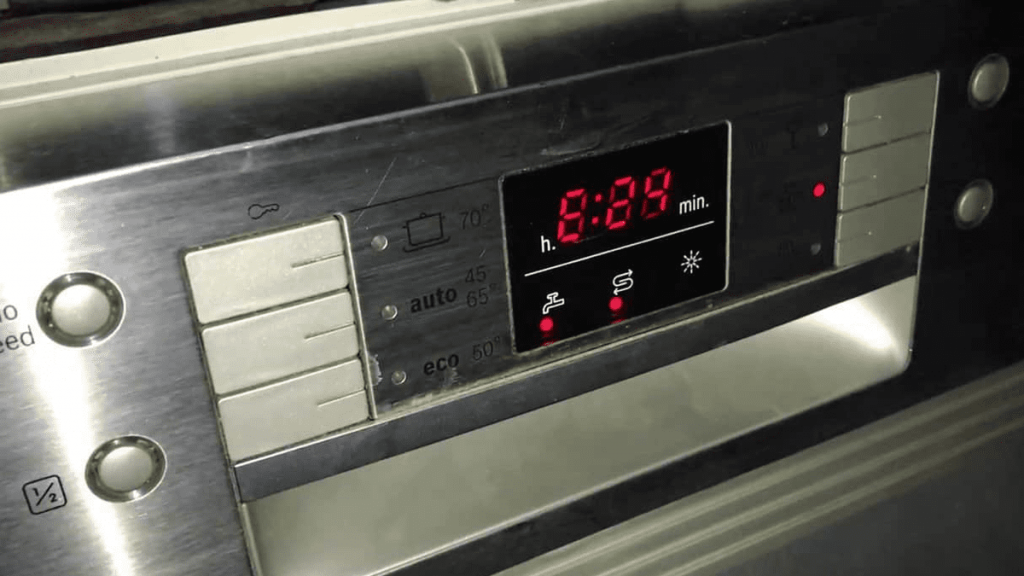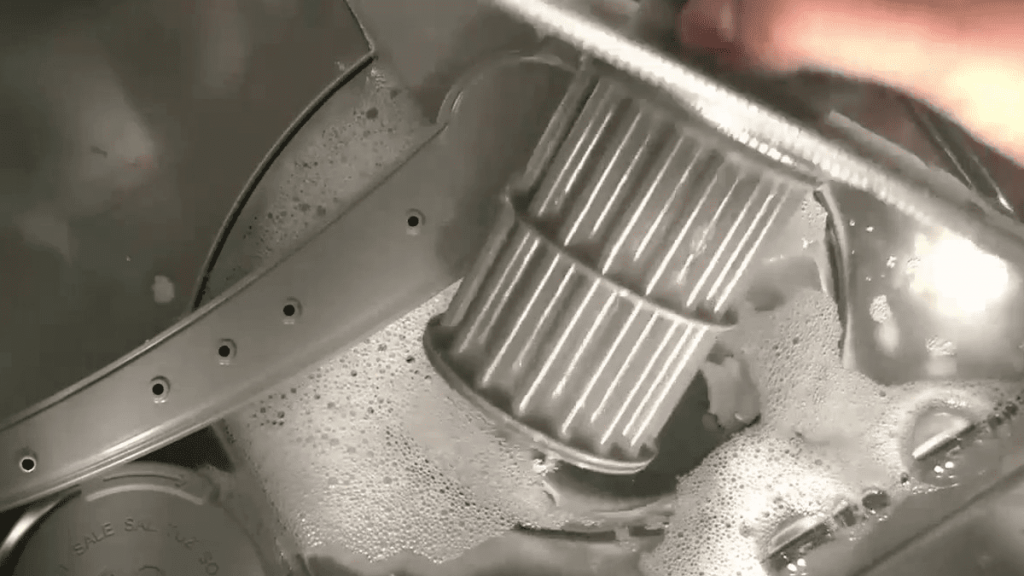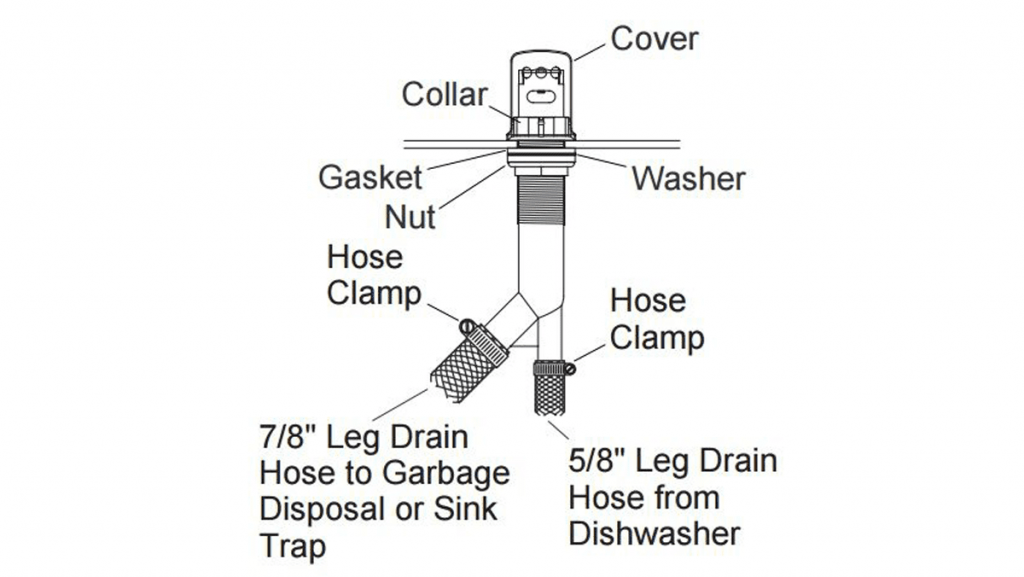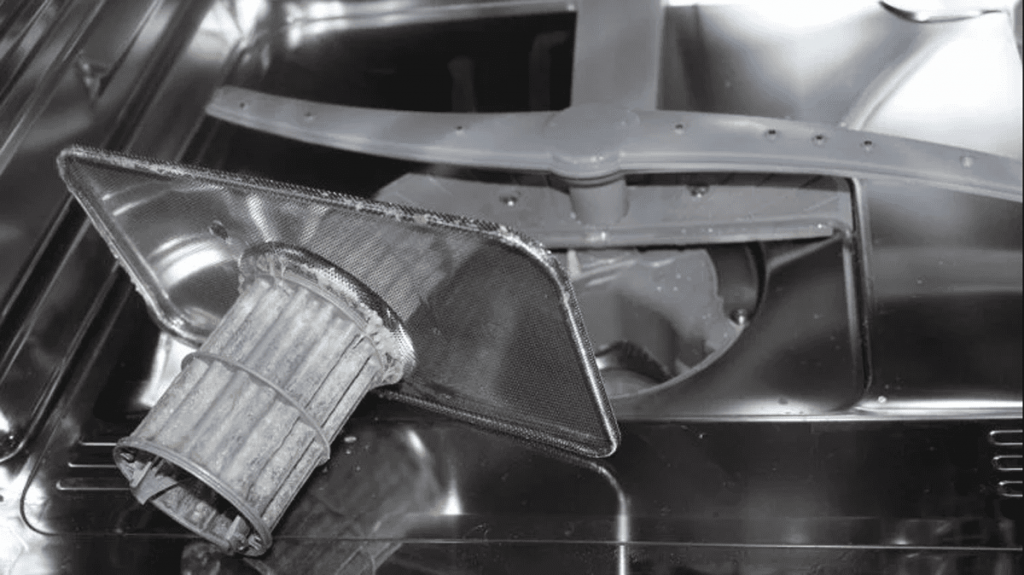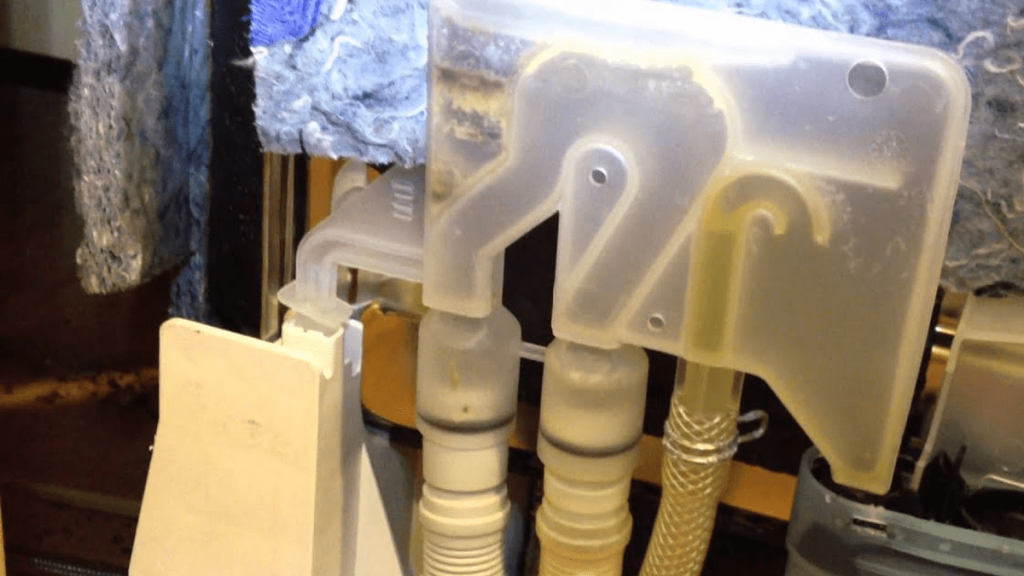During normal operation, the dishwasher fills and drains water on its own. During cleaning from contaminated water, a failure in the drain system is possible, in which errors are generated. Bosch dishwashers display the E24 and E25 codes on the display when the dirty water cannot be drained.
Error codes E24 or E25 indicate that the device cannot cope with water purification on its own. Both codes mean an interruption in the sewage system, but the main reasons for such a failure are different. Code E24 indicates a blocked drain filter. E25 indicates interruptions in the operation of the drain pump. Details and decoding of codes are specified in the documentation for the device.
This article describes the main causes of errors in the Bosch PMM. It also describes in detail tips for self-eliminating problems and returning the device to normal functioning without the help of service center employees.
The main meaning of errors E24 and E25 on the Bosch dishwasher
Codes E24 and E25 may appear for several reasons:
- Problem with the drain pump;
- The clogged gap that allows air to pass through;
- Absence or displacement of the pump cover;
- Clogged drain pipes.
Before intervention, it does not hurt to first check for the possibility of a malfunction in the electronic system. To completely reset the indicators, it is necessary to unplug the PMM power plug for 10 minutes. After that, restart the device. If the erroneous code appears on the screen again, you should start looking for other faults.
As mentioned above, the issuance of such messages indicates failures in the drain system. The reason may lie both in the drain filter – code E24, and with the liquid pump – E25.
The following section will help you troubleshoot and learn more about the functions of the drain pump, hoses and fittings, impeller cover and air gap.
-
Drain pump blocked
Not only Bosch, but any other automatic dishwashing machine is equipped with several pumps to ensure normal operation. One of the most important is the pump that releases dirty water. It is located inside the device at the very bottom. Its task is to free the tanks from the used liquid, directing its flow into the drain pipe or hose.
Reasons for failure
The most common problem is the blockage of the pump by a foreign object. The filter in the bowl of the machine does not 100% protect the hole leading to the drain pump from small particles such as broken glass or shards of porcelain, fruit peels, toothpicks, napkins and other debris. If this happens, the pump will not be able to push the water out.
Another reason may be clogging with food debris that gets into the hose from dirty dishes.
It is important to remember that food remains in any case remain on the surface of unwashed dishes. Even if it is pre-rinsed with clean running water. Over time, the sink and drain system build up such a volume of these residues that it provokes the failure of the entire operation of the dishwasher.
Correction Methods
It is possible to restore operation only after thorough cleaning of all internal hoses from contamination:
- The first step is to disconnect the device from the power supply and turn off the water supply. This will protect against injury and flooding during the repair process.
- The next step is to clean the bowl of the machine. It is best to clean the bowl of excess liquid with a small ladle or a regular sponge.
- The filter is located under the basket in which the dirty dishes are placed. The basket should be carefully pulled out and the filter removed.
- Clean the filter with running water and a small amount of gel will help wash it.
- Next, remove the pump cover and carefully remove all unnecessary microparticles inside. For this procedure, you must first wear gloves, because fragments or other sharp objects can damage the skin.
- Try to turn the pump wheel. There is no contamination left and the problem can be considered resolved if the wheel turns without difficulty.
- At this stage, the filter is placed in its original place, the cover is closed. Now you can start the sink and check if everything is back to normal.
-
Pollution of the air gap
The air gap is in the piping that connects to the machine. This is a fitting located in the sink under the kitchen countertop. It is designed to prevent dirty water from flowing back into the tank of the machine.
“Backflow prevention” is the name of the process performed by the air gap. It is installed on most automatic devices that pour out dirty liquid after work is completed.
As the name implies, this device does not allow the flow of used water to return. This is due to the circulation of the air flow in the branches of the water pipes. The gap also prevents cross-clogging.
Breakage problem
In order for the air gap to adequately perform its task, a smooth air flow without obstacles in its path is required. Litter in the gap causes problems in the passage of air. Even a slight accumulation of dust or the presence of a small mote can cause a malfunction. Sometimes it happens that a completely third-party object has got into the gap.
Such moments explain the interruptions in the operation of the Bosch dishwashing machine and the flashing of the E24 / E25 codes. Even if the code is not displayed, but the operation is partially blocked, the draining of the water is slower than usual.
To remedy the situation, the same cleaning of fixtures will come to the rescue.
Cleaning the air gap
The air flow device is located under the sink. It is worth carefully examining it, you can help yourself by highlighting a flashlight.
If a third-party object is visible in the gap, but it is difficult to remove it, long thin tweezers will come in handy.
To remove dust or buildup of small debris, it’s good to have an unused toothbrush or brush for washing short-haired bottles on hand.
In order for the machine not to give errors, and the drain to work correctly, it is recommended to periodically clean the gap.
-
Loosening of the impeller cover
The impeller of the pump plays a vital role in the drain function.
If the device is spinning in normal mode, then the drain pump is working normally. Thanks to the rotation of the impeller, the water descends in the right direction – from the dishwasher tank to the sewer.
The impeller is located at the bottom of the bowl and is closed from third-party access by a strong lid.
Oddly enough, the normal operation of the device depends on the correct installation and firm fixation of this very cover.
Occurrence of a malfunction
Codes E24 or E25 on a Bosch machine may appear due to weak fixation of the cover behind which the impeller is located.
The cover protects the impeller from food residues or other microparticles that can block its rotation. Among other things, a large volume of drain liquid leaks through the gap of a poorly screwed cover, which causes the pump to work in an overloaded mode. This causes a risk of overloading the drain pump.
Troubleshooting
The first step is to check the bottom of the machine for foreign objects, debris and damaged areas.
Feel all sides of the lid well with your fingers to make sure which corner of it is not screwed up properly.
If the cover is installed crooked, it must be completely removed and reinstalled in the correct position.
-
Clogged drain hose or pipe
PMM Bosch is equipped with several hoses and tubes through which dirty water is drained. Codes E24 and E25 may also indicate that one of these hoses is clogged and is not allowing water to flow in the correct direction.
The waste pipe is located at the bottom of the dishwasher, where all unnecessary liquid flows.
Why does it crash
Filters installed at the bottom prevent debris and food crumbs from entering the sewer. But over time, gaps may appear through which debris will enter along with water and clog the flow hoses, including the tube.
Clogging can develop into such dimensions that will block the normal functioning of the drain pipe, and with it the entire system.
Correction Methods
As it is already becoming clear, the machine will be able to drain the water in this situation only after it independently completely cleans the drain hoses and pipes. At the same time, it is worth remembering about your own safety and convenience of work. To do this, the device is first disconnected from the supply of electricity and water.
Subsequent actions are carried out in several stages:
- If liquid has accumulated in the dishwasher bowl, it is removed and the bottom is wiped dry.
- To gain access to the pipe, remove the panel from the back. Some variations of the Bosch dishwasher are not equipped with such a panel. Detailed instructions can be found in the user manual.
- Usually, the hose is fixed with a special clamp, which is carefully removed.
- To remove blockages, it is better to have a deep technical container on hand, into which stagnant water is drained from the hose.
- Clean the inside of the pipe with a soft brush or cloth. This is done to minimize the risk of damage to the canvas, along which water flows.
If there is no desire to disassemble the back of the machine or there are doubts about the correctness of the above process, you can use an alternative method. To do this, make a solution with the addition of vinegar and baking soda and fill the tank of the device with this mixture. Also suitable are special products that are used to clean the drain in the sink, bathtub, washing machine and dishwasher. Usually, the product is poured for several hours or all night. During this time, organic particles that clog all the nozzles should be absorbed.
But if the blockage is very strong or there are objects of inorganic origin inside, the latter method is unlikely to save the situation.

Prevention
For the correct operation of the Bosch dishwasher, it is recommended to remove all large particles of food from plates and pans before each wash. This will significantly reduce the clogging of filters, nozzles and other drain parts of the machine.

